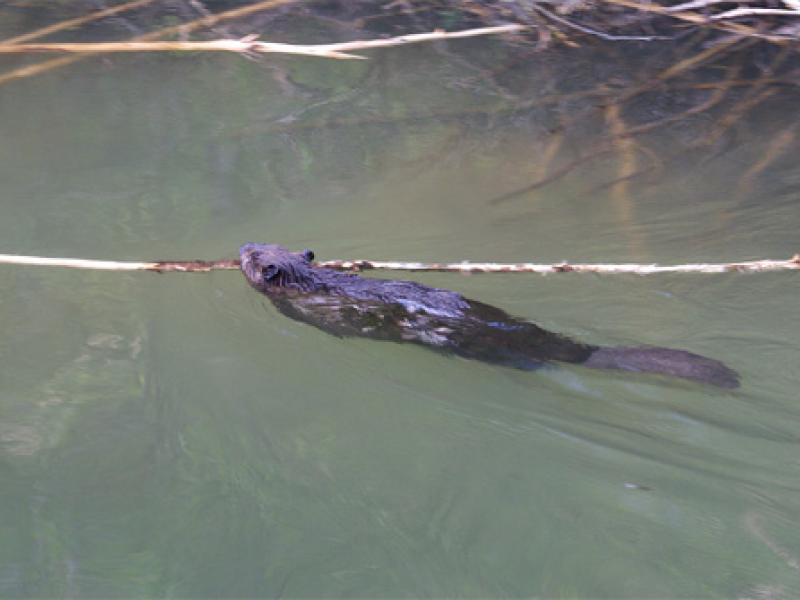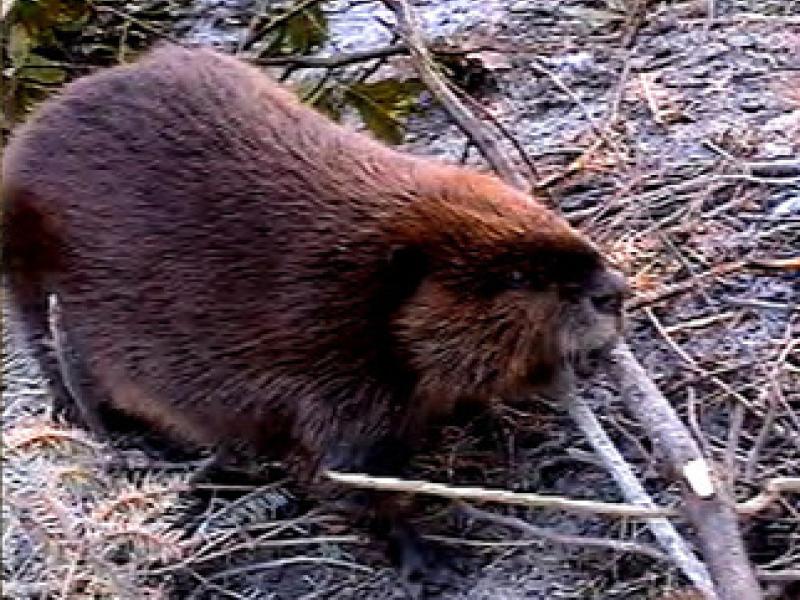Beaver Lodge, Photo Credit: Carrie Threadgill
SCIENTIFIC NAME:
Castor Canadensis
OTHER NAMES:
American beaver
STATUS:
Once extirpated, or nearly so, now common. Found statewide in all habitats with open water. Considered a pest in some areas, because of flooding caused by construction of dams. Lowest Conservation Concern.
DESCRIPTION:
The beaver (Castor Canadensis) isan aquatic animal and the largest rodent found in North America. It ranges in weight from 29 to 80 pounds and is 41 to 46 inches in length. The beaver has under fur that is soft and fine while the guard hair (outer fur) is long and coarse. Overall coloration is brown but individuals vary from cream to black. The hind feet are webbed and the front feet are clawed. Its naked, scaled, and flat tail can easily identify the beaver. Beaver are also known for their large front incisor teeth. Behind these incisors are lips that seal when beavers dive underwater. Their ears and nose are also valved to seal while underwater. These adaptations and others allow the beaver to submerge and stay underwater for up to 15 minutes.
DISTRIBUTION:
The beaver can be found across North America except in the northern-most reaches of Canada, the deserts of the southern United States, Mexico, and South Florida. In Alabama, beavers can be found in all 67 counties.
HABITAT:
Thebeaver is an aquatic mammal that can be found on any wet habitat that will provide adequate food sources and allow it the opportunity to create an environment by building dams. Beaver lodges are dome-shaped homes made of sticks, branches, saplings, reeds, rocks, and mud. They have one or more underwater entrances and a hollow area near the top where the beaver lives.
FEEDING HABITS:
The beaver feeds primarily on the bark and cambium (soft tissue under the bark) of shrubs and trees. Many species are consumed, with sweetgum, willows, and poplar among the favorites. Lilies, pondweeds, cattails, and other aquatic plants are also consumed. Agricultural crops are also used if available.
LIFE HISTORY AND ECOLOGY:
The beaver is a monogamous species. Mating usually occurs during the months of January and February. The young called kits are born in March to April after a gestation period of about 107 days. Kits are weaned around the age of 2 months. Young normally live with the family social unit (colony) until 2 years of age when they become sexually mature. They move or are driven off by parents to establish their own home colony.
IMPORTANCE:
The beaver played an important role in the early history of North America. Native Americans trapped the beaver for fur and for food. The life cycle of many aquatic and semi-aquatic plants and animals depends on the habitat created by beaver-built dams.
REFERENCES:
Yarrow, G., D. Yarrow. 1999. Managing Wildlife: On private lands in Alabama and the Southeast. Sweetwater Press, Birmingham, AL. 588pp.
Anderson, R. 2002. “Castor Canadensis” (On-line), Animal Diversity Web. Accessed March 11, 2005 at animaldiversity.ummz.umich.edu
Author:
Richard Tharp
Articles and Additional Information:







